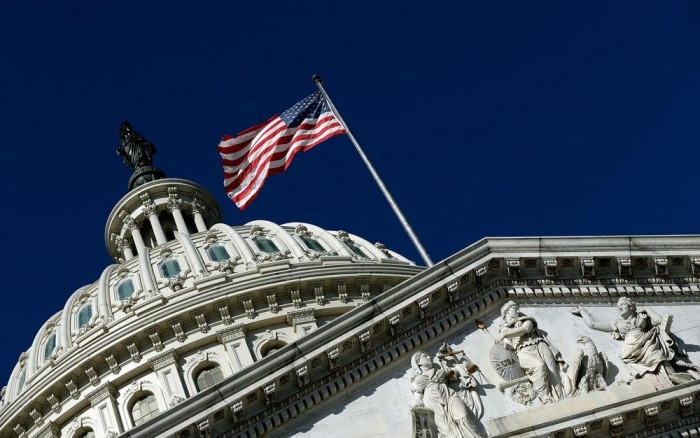
Financial Times writes that the US has overtaken India as the leading user of anti-dumping and other trade defence cases, with China and its steel sector the biggest target, according to research. The data highlight the growing anxieties in some sectors of industry about what they see as unfair competition from Chinese rivals.The research comes at a time of increasing anti-China rhetoric in US politics, and ahead of three politically sensitive anti-dumping cases this summer against Chinese steel imports that could result in the US imposing punitive duties of as much as 500 per cent...According to the annual Global Trade Protection Report, companies in the US launched 43 anti-dumping cases in 2015 and a further 22 anti-subsidy investigations aimed at securing countervailing duties. The US took the lead in both areas, overtaking India and Brazil, which launched the most cases in 2014 and 2013.
- New York Times reports that President Obama arrived in the steamy capital ofVietnam ahead of schedule on Sunday night to begin three days of meetings in hopes of luring yet another Southeast Asian country away from China's tight embrace... Mr. Obama's visit is an important step in a complex dance that Vietnamhas carried on with China for centuries. Most of Vietnam's illustrious historical figures made their reputations by battling Chinese invaders. The population here is deeply nationalistic and anti-Chinese sentiment is visceral. The American War, as it is known here, is mostly forgotten, particularly since half of the population is under 30. Vietnam relies on China for trade, investment and even the water that feeds the vast Mekong Delta, so the leadership knows it can poke the dragon only so much.
- Forbes reports that a revolution in consumer sentiment has spread across China. "Made in China" no longer inherently means cheap, inferior, and unfashionable. The respectable Chinese brand has emerged, and some have not only caught up with their more established foreign rivals but have actually started to surpass them in China and beyond.In 2011, 70% of smartphone sales in China were from three foreign brands: Nokia, Samsung, and Apple...seven of the top ten smartphone brands in the world are now Chinese. This includes Huawei, which is not only the mainland's top handset brand but is currently slotted as number two in Europe and number three in the world...According to a recent McKinsey report (PDF direct download link), 62% of Chinese consumers now prefer Chinese brands over foreign ones if the quality and price are equal.
- 2016-05-20 Taiwan President Takes Cautious Line on China at Inauguration
- 2016-05-19 China, Denying Close Encounter With American Plane, Points Finger at U.S.
- 2016-05-18 China criticizes US steel anti-dumping measures
- 2016-05-17 Top ranked Chinese official to 'listen' to HK demands as independence calls grow
- 2016-05-16 China Housing Revival Buffers Economy
- 2016-05-15 Maoists Still a Force 50 Years After the Cultural Revolution
- 2016-05-13 Apple invests $1 billion in Chinese ride-hailing service Didi Chuxing
- 2016-05-12 EU lawmakers reject market economy status for China
- 2016-05-11 Ahead of inauguration, China says Taiwan to blame for any crisis
- 2016-05-10 U.S. Sails Warship Near Island in South China Sea, Challenging Chinese Claims
- CNBC Beijing threatens new Taiwan president: Acknowledge One China or talks stop
- Reuters China's Premier urges less red tape to bolster economy: Xinhua
- USA Today Threat from Russian and Chinese warplanes mounts
- Fox News Hundreds in central China protest lack of college placements
- Reuters Kyrgyzstan seeks to bring in Chinese factories
- Financial Times Hanergy warns against 'over interpreting' founder's resignation
- Forbes China Credit Squeeze, Defaults Are Signs Of Coming Crisis
- Reuters China policy bank to lend around $458 bln for poverty reduction
- Reuters China central bank seeking ways to collect online lending data
- Reuters 'One China' principle must be basis for relations with Taiwan: Xinhua
- foreignpolicy.com In the East China Sea, Beijing's Big Ships Push the Envelope
- blogs.wsj.com China's 13th Five-Year Plan: Q&A with Scott Kennedy and Christopher K. Johnson
- Wall Street Journal China's Taiwan Squeeze
- Bloomberg Hong Kong's Boat Rocking as Political, Economic Storms Converge
- Financial Times Cameron to face pressure over China relations at G7 summit
- Financial Times Washington's warming relations with Vietnam
- CNN Obama still looking to pivot on 10th trip to Asia
- Forbes Why The South China Sea Has More Oil Than You Think
- Financial Times China's growth problems will not be cured by retail therapy
